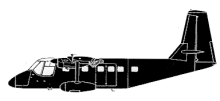Incident Overview

Description
GAF Nomad ZP-TDZ was chartered for some flights in northern Argentina. It left Asunci¢n (ASU) for Resistencia Airport, CH (RES). After another landing at Joaqu¡n V. Gonz lez, the aircraft continued to Salta (SLA). During the descent both engines flamed out as a result of icing of the air intake. The pilots had to carry out a forced landing near the Ruta Provincial 24. The Nomad struck some trees and landed in a plowed field. The undercarriage was completely destroyed. CAUSE: During a non-scheduled commercial flight, in the final approach phase, a landing was made on an unprepared field, due to the failure of both engines because of incorrect use of aircraft anti-icing system, resulting in significant damage but no injuries to the people aboard. Contributing factors: 1) Poor flight planning. 2) Conditions favorable for the formation of ice.
Primary Cause
Incorrect use of aircraft anti-icing system during final approach, leading to engine failure due to icing of the air intake.Incorrect use of aircraft anti-icing system during final approach, leading to engine failure due to icing of the air intake.Share on:





